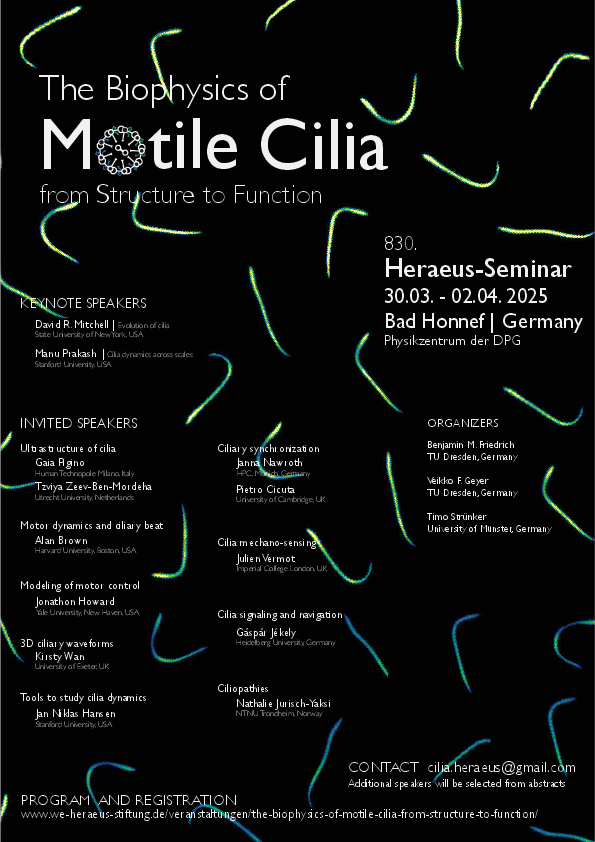The Biophysics of Motile Cilia ‐ from Structure to Function
830. WE-Heraeus-Seminar
30 Mar - 02 Apr 2025
Where:
Physikzentrum Bad Honnef
Scientific organizers:
Prof. Dr. Benjamin Friedrich, TU Dresden • Dr. Veikko Geyer, TU Dresden • Prof. Dr. Timo Strünker, U Münster
Motile cilia are fundamental organelles of eukaryotic cells and regulate numerous biological processes. For example, in the respiratory tract or fallopian tube, the entire epithelial surface is covered with a carpet of motile cilia, whose beat is synchronised to transport mucus, pathogens, and dirt particles out of the airways. Motile cilia are not only used for fluid transport, but also for locomotion of unicellular organisms and single cells as well as to perceive environmental cues. A prime example are sperm cells that are propelled by their single motile cilium, named flagellum, which also serves as a rudder and sensory antenna. Unravelling the physiology of these integral cell organelles is an interdisciplinary endeavour at the interface of physics and biology. Integrated research approaches combining basic research on both the fundamental biological and physical principles of ciliary function are required to gain insights into the structure and function of individual cilia as well as the mechanisms orchestrating and synchronizing ciliary beating patterns. Clinical research and treatment of patients with ciliopathies depends on the biophysical knowledge gained by such approaches.
The aim of this seminar is to bring together scientists from different disciplines to address the physical, biological, and clinical aspects of motile cilia.

The conference language will be English. The Wilhelm and Else Heraeus-Foundation bears the cost of full-board accommodation for all participants.

